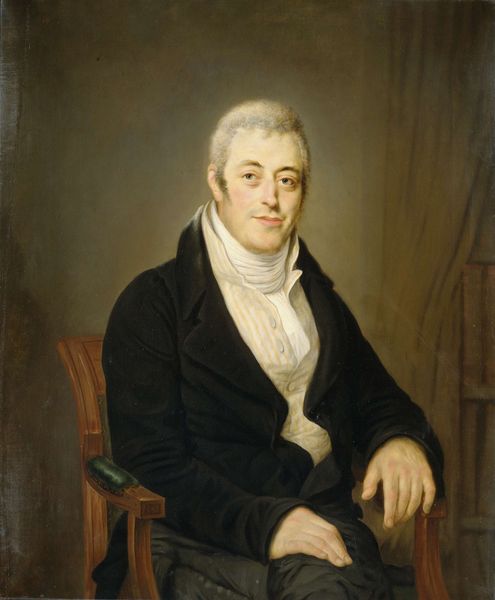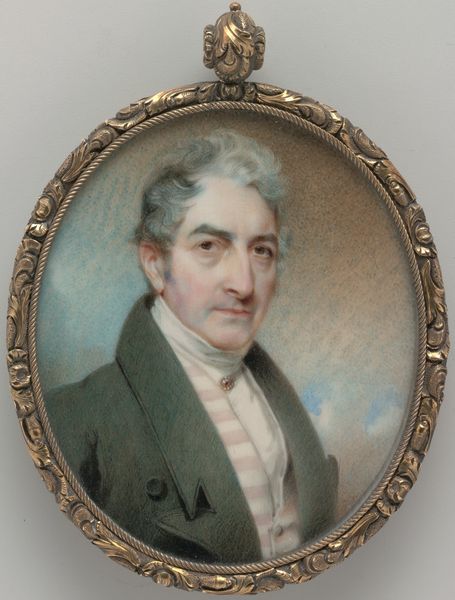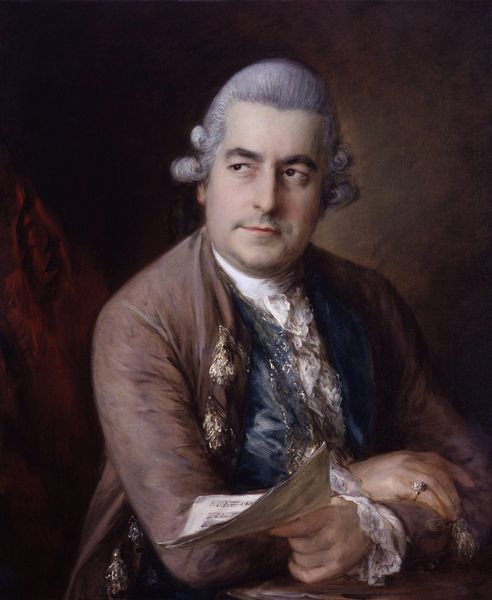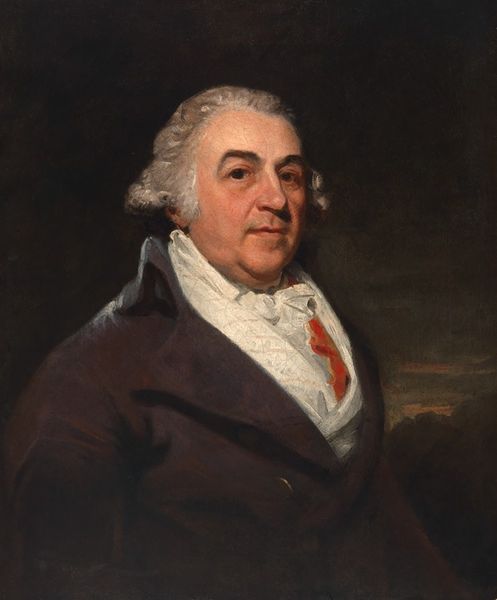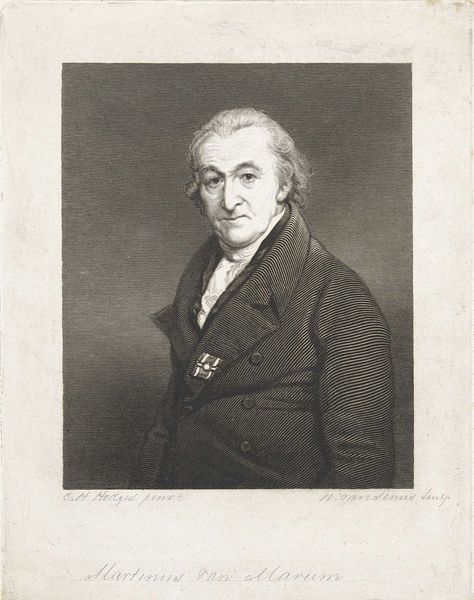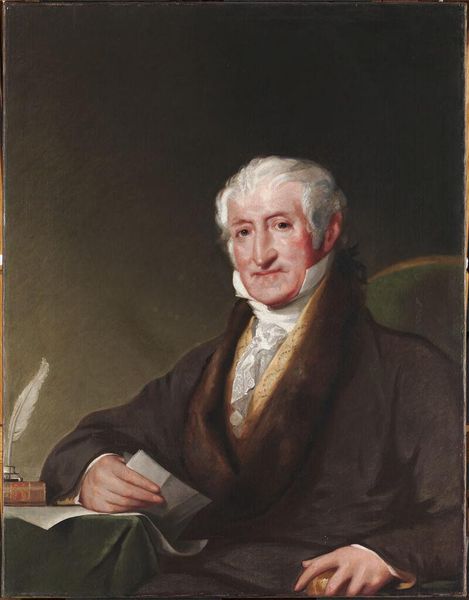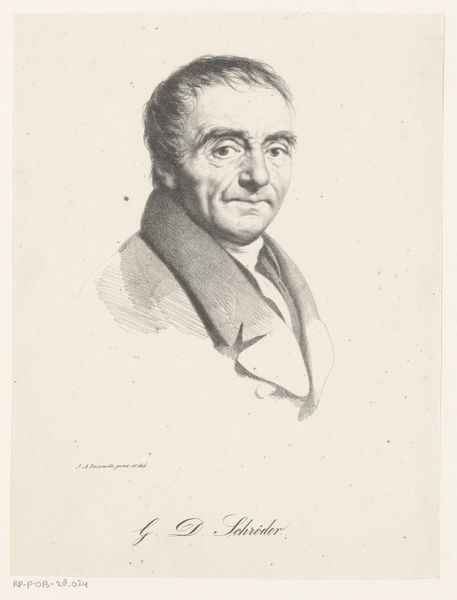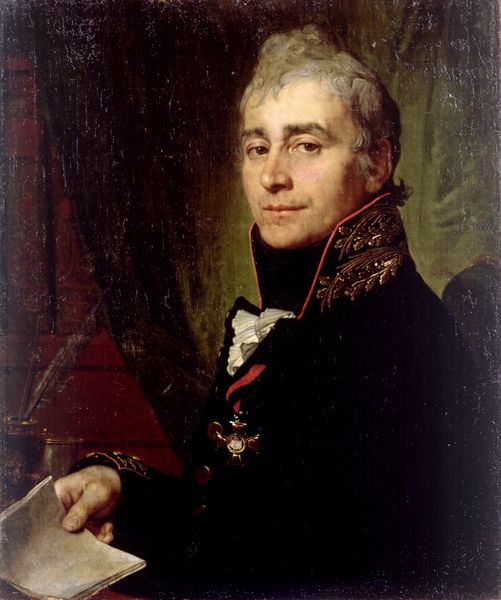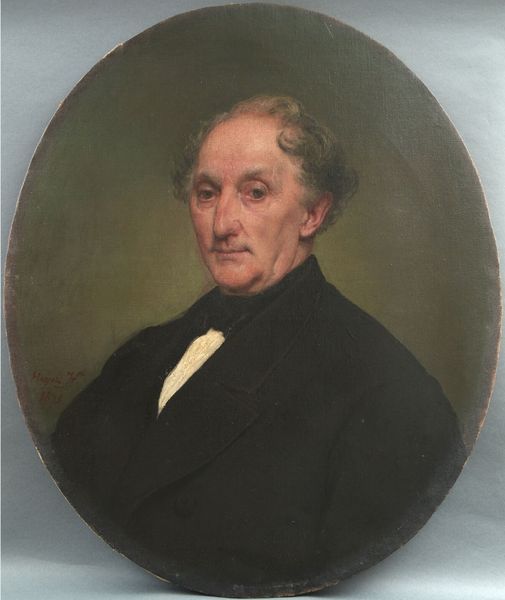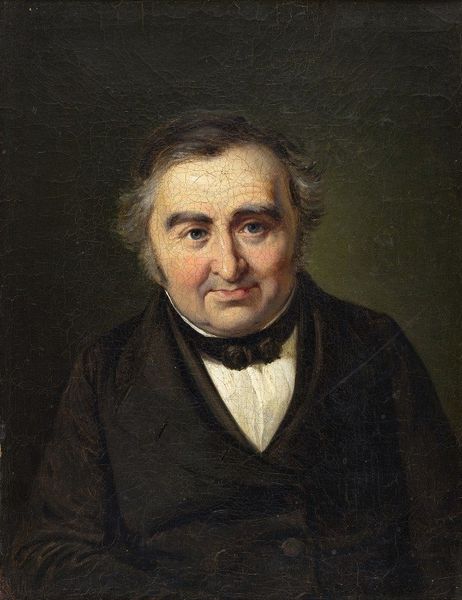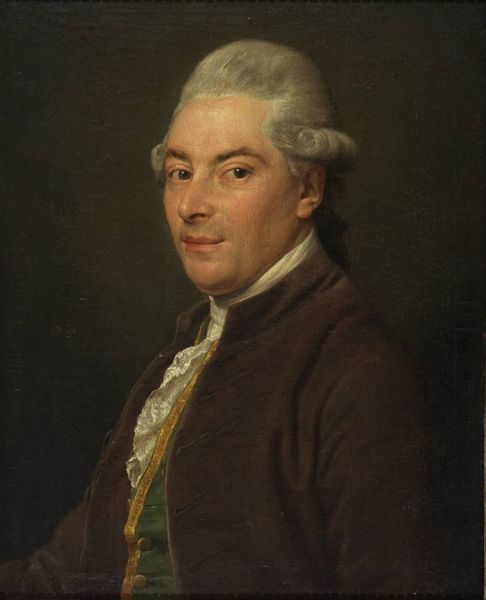
painting, oil-paint
#
portrait
#
figurative
#
portrait image
#
portrait
#
painting
#
oil-paint
#
portrait reference
#
portrait head and shoulder
#
romanticism
#
portrait drawing
#
genre-painting
#
facial portrait
#
academic-art
#
portrait art
#
fine art portrait
#
celebrity portrait
#
digital portrait
Copyright: Public Domain: Artvee
Editor: So, here we have Henry Raeburn's "E. Finlay, Esquire," dating back to about 1800. It’s an oil painting, and what immediately strikes me is the sitter's clothing. What can you tell us about it? Curator: The rendering of Finlay’s clothing speaks volumes. Notice the tailoring of his coat, the crispness of his linen. This isn't simply about depicting status, but about revealing the complex industries that supported that status. We're looking at a representation of global trade routes, colonial economies, and the labor involved in producing these fine materials. Editor: I hadn’t thought of that. So the clothes become a signifier for broader economic forces? Curator: Exactly! Raeburn isn't just showing us a portrait; he's displaying the tangible results of a system built on the backs of workers and raw materials sourced, in many cases, through exploitation. Think of the dyes used – where did they come from, and what was the human cost? Editor: So even something that looks straightforward can have so much hidden meaning relating to production. Is the type of oil paint significant? Curator: Indeed. Consider the pigments used. Were they locally sourced, or imported? The answer can tell us about artistic networks and the movement of goods and materials across the globe at the time. Raeburn’s access to and use of specific materials reflects a complex interplay of supply chains, trade relationships, and his own patronage. It compels us to rethink what is meant by “Scottish Art” in a world that relied heavily on international production. Editor: I see what you mean. I’ll never look at a portrait the same way again! It’s about understanding the whole production cycle. Curator: Precisely. And appreciating art as embedded within broader social and economic structures.
Comments
No comments
Be the first to comment and join the conversation on the ultimate creative platform.
